This guide introduces the characteristics of this type of solar panels, discusses its various technologies and finally shows the best thin film solar panels in the market.
The Thin Film Solar Panel is one of the most efficient type of solar panels, and it’s an advanced technology which is versatile, cost-efficient and a viable form of solar panel.
Thin Film Solar Panels helps achieve the true intent and essence of using Solar Panels as they are cost-effective, produce efficient power supply, don’t emit ODS, etc. Monocrystalline Solar Panels and Polycrystalline are expensive, too dainty and not relatively durable, hence, the Thin Film solar panels provides relevant responses to all the negative sides of both the Monocrystalline and Polycrystalline Solar Panels.
While there are diverse Thin Film Solar Panels in the open market, only a handful of them are, actually, up to the required international standards. Here, this guide aims to evaluate, appraise and review the best Thin Film Solar Panel. The reviewed Solar Panels are above the average standards and we assure you of proper value for your money.
Are you aware that the sun that rises daily is copious enough to cater for the electricity needs of planet earth? Homeowners, Individuals, companies, government, etc., are all dazed as to which type of solar panel to procure for their use.
Thin Film Solar Panels Buyer’s Guide
Definition of Terms
If you are new to the world of green energy, you might not be familiar with some terms often used when discussing about solar panels; therefore, we are going to introduce some of the terms we think you need to understand first before plunging into the profound sections of the article.
Efficiency Range
The efficiency range here means the ability of a single Thin Film Solar Panel to convert acquired sunlight into usable electricity. The higher the efficiency the better for the consumer has it means the consumer would buy less single panels. Higher efficiency range gives the buyer a clear clue to recognize the best thin film solar panels.
Temperature
This means the minimum and maximum temperature in which the Thin Film solar panel can function. In this review, all the best thin film solar panels are considered to have a minimum temperature of -40°C and a maximum temperature of 80°C.
Weight
Weight refers to the density of the Thin Film Solar Panel. In general, Thin Film Solar Panels are lightly weighted so you should not be scared of applying dead weight on your roof. Nonetheless, the weight of each of the Thin Film Solar Panel is considered in the review.
Durability
This means how long the Thin Film Solar panel can last. Hence, it is important to know how durable the Thin Film Solar Panel is before procuring it. As a consumer, you want to buy the best thin film solar panel that would last longer. All the Thin Film Solar Panels considered in this review are durable.
Warranty
It is the assurances given to the consumer by the manufacturer that if any fault (manufacturers or environmental) is discovered on the Solar within a specified period of time and the manufacturer would fix or completely replace it. It’s worth mentioning that there are two types of warranties regarding solar panels. One covers the material defects which varies from 5 to 10 years depending on the module while the other type covers the loss of efficiency rate per year for mostly 25 years.
Types of Thin Film Solar Panel
Crystalline silicon wafers are very expensive to produce, which has prompted many producers into looking at cheaper materials, and more cost-effective ways of making solar cells. There are four most common materials used in the production of thin film solar panels:
- Cadmium Telluride (CdTe)
CdTe is the most generally used thin film technology, and it holds around 50 percent of the market share for Thin Film solar panels.
It contains substantial measures of Cadmium – a component with comparative toxicity– so this is a factor to take into consideration.
- Amorphous Silicon (a-Si)
After CdTe, a-Si is the second option when it comes to popularity. In terms of durability and toxicity, a-Si is a lot better than its rivals. However, it isn’t as efficient as others and isn’t suitable for huge requirements such as consumer electronics.
- Copper Indium Gallium Selenide (CIGS)
At 22.3%, CIGS cells are probably the best materials for Thin Film techs as far as efficiency level is concerned. However, most companies find it difficult to work with this material and they are finding it hard to bring an efficient unit with attractive prices to the market.
- Gallium Arsenide (GaAs)
GaAs is an expensive technology. It currently holds the highest efficiency level for every single-junction solar cell at 28.8% which strongly qualifies as the best thin film solar panels technology. In fact, this material is mainly utilized on spacecrafts and the likes. For that reason, it is made for flexible, mass-scale PV energy installments in strange environments.
Best Thin Film Solar Panels Reviews
The following table lists the best thin film solar panels from wholesalers and retailers in the year 2018
| Model | FS Series 6 | PowerMax® | Xtreme+ | Kaneka U-EA |
|---|---|---|---|---|
| Manufacturer | First Solar | Avancis | NexPower | Kaneka |
| Efficiency Range% | 17-18 | 13.8 | 10-15 | 8.2-9.8 |
| Temperature Range | -40°F~185°F -40°C~85°C | -40 F~194°F -40°C~90°C | -40°F~194°F -40°C~90°C | -4°F~176°F -20°C~80°C |
| Weight | 77 lb 35 Kg | 37.5 lb 17 Kg | 43 lb-55 lb 19.5 Kg-25 Kg | 40 lb 18.3 Kg |
| Price per Watt* | $3 | $1.5 | $1.77 | $2 |
| Output (Watt) | 420-445 | 130-145 | 150-160 | 100-120 |
| Warranty | 10 Years (material defects and workmanship) 25 Years (power output**) | 10 Years(material defects and workmanship) 10-25 Years (power output**) | 5 Years(material defects) 25 Years (power output**) | 5 Years (material defects and workmanship) 25 Years (power output**) |
* The price per Watt in the above table, is an estimated price based on the average sale price per panel.
** Power decreases by 0.5% every year on average.
Here, we will be considering the best Thin Film Solar Panels. For this purpose, the reviews below were based on all-embracing standards and expectations;
FS Series 6 Solar Panels
First Solar
First Solar designers have built FS Series 6 with amorphous silicon channels. Moreover, they have designed these panels to perform efficiently even in cloudy, low-lighted, hot and humid climes. This Solar Panel can yield energy more than everyday crystalline-silicon solar panels. Besides, the FS Series 6 convert trapped sunlight into electricity without emitting any form of ozone layer depleting substances.
The FS Series 6 produce 218.5 -220.4 Volts Open Circuit Voltage. The Solar panel has a length of 6.5 ft(2 m) and a width of 4 ft(1.23 m). It weighs 77 lb(35 kg) and can withstand the merest temperature of -40°F(-40°C) and function within a maximum temperature of 185°F(85°C). The FS Series 6 come with a warranty of 10 years which is reassuring to the end users.
In fact, this series have 6 output-based models (FS-6420, FS-6425, FS-6430, FS-6435, FS-6440, FS-6445) with output powers (420,425,430,435,440,445) Watts respectively, while the lower power output series 4 varies from 110 Watts to 122.5 Watts.
When it comes to pricing, First Solar has only made these panels available to developers and system integrators as they are targeting large scale solar systems projects around the world. However, home and business owners may purchase First solar panels from the developers who sell these high quality solar panels.
Advantages
- Versatile mounting features
- Very durable
- High efficiency
- The highest power output per module in the market = less space required.
- Quick installation
- Reliable performance in high humidity.
- Operate well in extreme desert and coastal environments
- 10 years warranty
Disadvantages
- Expensive
- Heavy.
Avancis PowerMax® Solar Panels
AVANCIS GmbH
Made by Avancis located in Germany. The PowerMax® is a solar panel which boasts of wonderful aesthetics which decorate wherever the Thin Film Solar Panel is installed. Also, Avancis adopt the C.I.G.S. technology for the PowerMax® and they have built these solar panels with less material which makes the PowerMax® more greenhouses friendly. The PowerMax® is relatively expensive but it covers up for that with quality materials being used in fabricating the panel and its stunning allurement.
The PowerMax® has two models; PowerMax®3.5 and PowerMax® SKALA both with an efficiency range of 13.8 percent. PowerMax®3.5, however, is specifically designed for rooftop applications and solar parks. In terms of power output, it has 4 variations; 130 Watts, 135 Watts, 140 Watts and 145 Watts. On the other hand, PowerMax® SKALA is solely designed for facades (the front of buildings) and it comes with 145 Watts. Furthermore, you can choose the available sizes and colors that match your taste for PowerMax® SKALA. The panel comes along with a 10-year warranty which really comforts the consumer to consider it as one of the best thin film solar panels.
Advantages
- High-efficiency range
- Quite affordable
- Excellent aesthetics
Disadvantages
- Limited developers and system integrators.
Xtreme+ Solar Panels
NexPower
Xtreme+ solar panels are products of NexPower; a solar energy company located in Taiwan who specializes in Thin Film Solar Panels which specifically designed for BIPV (Building Integrated Photovoltaic) power systems with the ability to install facing multiple directions.
Each type of Xtreme+ solar panels has the efficiency range of 10-15 percent which makes them sit among the best thin film solar panels presently in the open market. Furthermore, the Solar Panel can prevail against the cold temperature of -40°F(-40°C) and can also bear hot temperature as high as 194°F(90°C). Xtreme+ comes with a frame-less type Xtreme+ (AG) which weighs 55 lb(25 Kg) and has a unique compact design with 0.27 in(6.8 mm) in thickness. In contrast, the other frame modules Xtreme+ (AF) and Xtreme+ (AX), weigh 43 lb(19.5 Kg) and 43.6 lb(19.8 Kg) with 1.4 in(35 mm) and 1.7 in(42 mm) thickness respectively. However, all the three models have the same power output range of 150 to 160 Watts. Lastly, Xtreme+ solar panels come with a 5-year warranty which is quite assuring comparing to the other thin film solar panels manufactures.
Advantages
- Beautiful design
- Very affordable
- High-efficiency range
- 5-year warranty
Disadvantages
- Limited developers and system integrators.
Kaneka U-EA Solar Panels
Kaneka coprporation
Kaneka designed the U-EA modules to match the highest standards; a solar energy company located in Japan. U-EA modules’ efficiency range is 8.2-9.8 percent. These solar panels are built to be easily installed as they require no special tool for installation. Even more, The Sharp 120 Watts Thin Film Module comprises of an amorphous and Microcrystalline silicon film. The Solar Panel which is black in color is so designed to give a glamorous appearance to it. In addition, the U-EA yields very high energy under high temperature.
What makes this product unique, is its hybrid technology which combines the features of both amorphous silicon and micro-crystalline silicon to create higher energy production. Its dual-layer structure can capture both short and long wavelengths of the light spectrum allowing the hybrid to convert even more sunlight to electricity. This enhances the efficiency of power generation and produces up to 30% higher power output than conventional thin-film amorphous silicon panels. Kaneka U-EA hybrid models; U-EA100, U-EA105, U-EA110, U-EA115 and U-EA120, are ideal for low angle installations. In other words, you can install them close together, allowing for more roof coverage and higher power output. Additionally, they are shadow tolerant so that they perform even if part of the panel is shaded. As a result, we have listed Kaneka solar panels as one of the best thin film solar panels.
Unfortunately, Kaneka Solar Panels couldn’t compete with the above three thin film solar panels manufactures in terms of efficiency range and power output. After all, they still worth presented concerning the high-quality standards of Japanese industry.
Advantages
- Quality Material
- Highly effective under high temperature
- Shadow tolerant
Disadvantages
- Relatively low efficiency range.
- Relatively low power output of 120 Watts for the highest module.
- Limited developers and system integrators.
Conclusion
We have come to the end of this article as we discussed the need to procure the latest technology of Thin Film Solar Panel. Even more, we went on to further discuss some of the things to consider before buying this type of panels. Finally, we reviewed the best Thin Film Solar Panels as of year 2018.
Overall, every product mentioned here is excellent and from different solar energy manufactures located in the US, Germany, Taiwan and Japan. Accordingly, we recommend you not to buy just any solar panel; buy the best thin film solar panels to avoid the hassles of buying substandard solar panels; save yourself the troubles of constantly changing the solar panels.
[content_band style=”color: #333;” bg_color=”#ffddea” border=”all” inner_container=”true”] [custom_headline style=”margin-top: 0;” level=”h4″ looks_like=”h3″]Not finding your favorite thin film solar panel?[/custom_headline] Please note that we strive to provide you with the best possible ones so we appreciate your addition of what you feel worth mentioning in the comments section bellow. [highlight type=”light”] Share your buying experience with the community [/highlight] [/content_band]
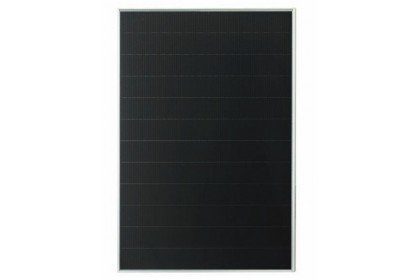
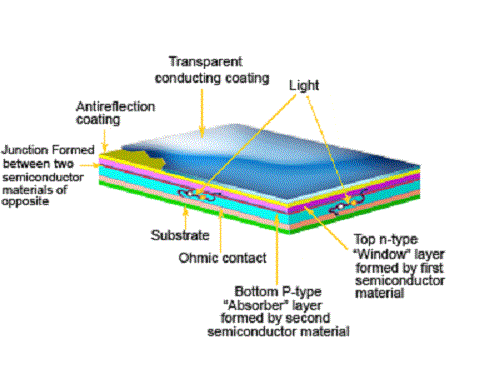

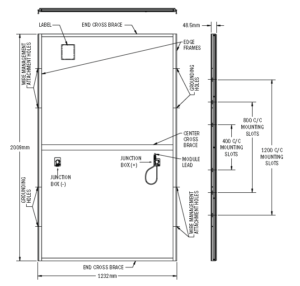

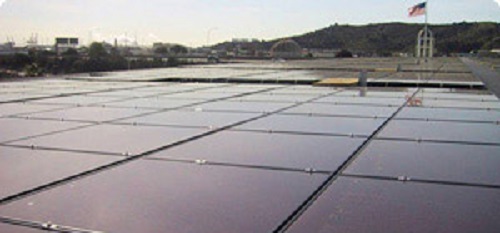
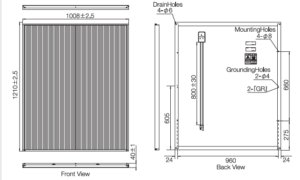
Comments
Don’t forget to deduct the cost of cleaning the solar panels monthly.
Solar panels are installed with a tilt so that rain generally cleans them adequately.
High-dust areas may need external cleaning.
First solar is their king. I have really a great experience with series 4.
Thanks for the great guide by the way.
Please let us have more infor regarding about what kind of plastics materials for your solar panel “foil”.
thanks.